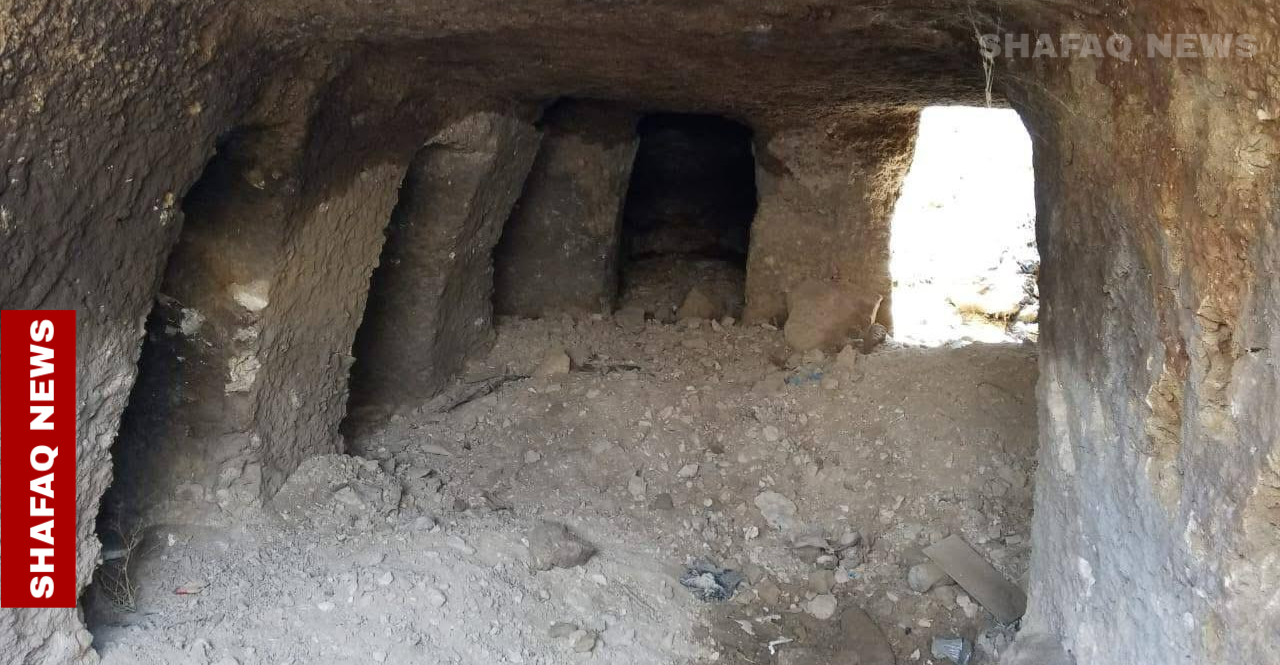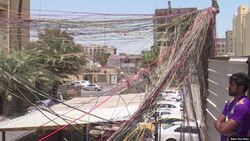A race against time: Restoring Iraq's lost history

Shafaq News/ Iraq, the cradle of ancient civilizations, holds some of the world's most extraordinary archaeological treasures. From the majestic ruins of Babil to the remnants of Nineveh, its history has profoundly shaped human civilization. Yet, this invaluable heritage faces relentless threats, such as urban expansion, illegal excavations, and the devastation wrought by ISIS.
Despite these challenges, local and international efforts are working to safeguard Iraq’s cultural patrimony, ensuring that future generations can appreciate its historical significance
A Stolen Legacy
Since the fall of Saddam Hussein in 2003, Iraq has suffered relentless plundering of its historical artifacts. Looters, emboldened by weak law enforcement and a thriving black market, have stripped the country of invaluable relics.
More than 15,000 artifacts were stolen from the National Museum of Iraq in Baghdad, with many still unaccounted for. The country has become a prime target for antiquities traffickers, fuelling an illicit trade worth billions. Smugglers move stolen relics through neighboring countries like Jordan and Turkiye before they surface in international auctions.
A 2018 UN report confirmed that Iraq’s black-market antiquities trade remains rampant, with Sumerian, Akkadian, and Assyrian artifacts among the most commonly trafficked items.
Beyond cultural loss, looting robs Iraq of economic potential. If properly preserved, its historical sites could attract tourism, generate jobs, and strengthen local economies. However, as these sites deteriorate, their appeal fades, leaving once-thriving landmarks abandoned.
Archaeologist Sawsan al-Dulaimi stressed, “Looting isn’t just theft—it’s an erasure of our past. Each stolen artifact is a piece of our history lost forever.”
Modern technology has only worsened the crisis. The widespread use of metal detectors has made illegal excavations more efficient. Experts urge Iraq to invest in surveillance systems and strengthen international cooperation to recover stolen artifacts.
The rise of ISIS in the early 2010s also unleashed an unprecedented wave of destruction against Iraq’s archaeological sites. Between 2014 and 2017, ISIS systematically targeted cultural landmarks, demolishing or looting priceless artifacts to finance its operations.
One of the most infamous acts of vandalism was the obliteration of Nimrud in 2015. Militants used bulldozers, explosives, and sledgehammers to level the ancient Assyrian city, reducing 3,000-year-old bas-reliefs and statues to rubble.
The monumental Lamassu statues of Nineveh, majestic winged bulls that once guarded the Assyrian capital, met a similar fate.
Meanwhile, Hatra, a UNESCO World Heritage site celebrated for its blend of Greek, Roman, and Eastern architectural influences, was methodically destroyed.
ISIS’s crimes extended beyond physical destruction. The group looted antiquities on an industrial scale, generating an estimated $100 million from the illegal sale of Iraqi artifacts.
“We lost everything,” lamented Dr. Laila Al-Mohsen, an archaeologist from Mosul. “What they destroyed was more than history—it was our identity. Generations before us built these cities, and ISIS erased them in weeks.”
Concrete over History
While ISIS’s reign of terror has ended, Iraq’s cultural heritage faces another relentless adversary: urban expansion. As modern cities swell, unchecked development encroaches upon archaeological sites, threatening to bury history beneath concrete and steel.
Across Iraq, rapid urbanization is reshaping the landscape. In cities like Baghdad, Babil, and Nineveh, housing projects and infrastructure sprawl dangerously close to ancient ruins. Weak zoning laws and lax enforcement have allowed entire neighborhoods to rise atop millennia-old heritage. A 2022 report by Iraq’s Ministry of Culture revealed that 30% of major archaeological sites within urban areas have suffered severe damage due to construction activities.
Bavil (Babylon,) once a grand symbol of Mesopotamian civilization, faces ongoing erosion as large-scale projects eat away at its ancient walls.
In Nineveh, residential expansion presses into the heart of the Assyrian capital. Dr. Ahmed Rashid, a specialist in Mesopotamian history, warns, “Modern cities are being built atop layers of history, and without careful planning, that history is disappearing.”
Al-Anbar province, home to some of Iraq’s oldest archaeological sites, is also at risk. A study by the Fallujah Antiquities Authority found that 40% of its known historical locations face encroachment from expanding development. The consequences extend beyond direct construction—nearby urbanization weakens preservation efforts, hastening decay.
Urban planner Mustafa Kareem underscored the urgency of intervention, “Declaring these sites important isn’t enough. We need concrete action to protect them.”
Heritage specialist Hudhayfa al-Dulaimi described archaeological sites as “humanity’s memory vaults,” emphasizing that preserving them is essential to maintaining cultural identity. “It’s not just about conservation; it’s about keeping a nation’s past alive for future generations.”
Bureaucracy’s Burden
Although the Iraqi government has enacted laws to protect its heritage, enforcement remains weak due to corruption, underfunding, and inadequate training for law enforcement.
Iraq’s Antiquities and Heritage Law, introduced in 2002, imposes severe penalties for looting and smuggling, but a 2018 report by the Ministry of Culture found that only 20% of antiquities theft cases result in arrests or convictions. Many offenders evade justice through bribery or lack of evidence.
“We have laws, but they are poorly enforced,” acknowledged Ammar Ali, director of Anbar’s Antiquities Department. “Criminals are well-organized, and authorities struggle to keep up.”
Funding is another major hurdle. Iraq allocates a mere 0.5% of its national budget to cultural heritage—far less than neighboring countries like Egypt and Iran. This chronic underfunding has stalled crucial restoration projects. Moreover, with fewer than 300 archaeologists and heritage experts tasked with protecting thousands of sites, the workforce is woefully inadequate.
Public engagement is also key, stressed Ali. “Preserving our history isn’t just a government responsibility. Communities must be part of the solution,” he added.
Global Heritage Rescue
Despite the immense challenges, global efforts to preserve and restore these invaluable sites are gaining momentum. Governments, NGOs, and cultural institutions—local and international—are dedicating resources to safeguard Iraq’s historic landmarks.
Since 2017, the European Union has allocated over €10 million to restoration projects in Mosul, Nineveh, and Hatra.
UNESCO’s “Revive the Spirit of Mosul” project, one of the most ambitious, is focused on rebuilding the Old Town of Mosul, including the Al-Nuri Mosque and its iconic leaning minaret, both destroyed by ISIS. This initiative goes beyond restoration, engaging the community by creating jobs and fostering a sense of ownership. UNESCO works closely with local authorities to ensure the project maintains architectural integrity while using modern preservation techniques.
Other countries have contributed to Iraq’s heritage restoration. The UAE has pledged significant funding for Mosul’s historic district, while France allocated $5 million for Nineveh and Hatra. Germany has provided expertise to reconstruct Babylon’s Ishtar Gate, an emblem of ancient Mesopotamian civilization.
Italy stands out for its strategic involvement. Since 2016, Italy has contributed both financially and technically, committing over €7 million to restoration efforts, particularly in Mosul, Nineveh, and Erbil.
Italy has funded the restoration of Hatra, preserving its monumental gate and temples, which blend Greco-Roman and Eastern architectural styles.
In addition to financial aid, Italy’s experts have trained Iraqi conservationists, building long-term local capacity for site protection. Italian archaeologists, like Dr. Fabio Manfra, have worked with Iraqi counterparts, using 3D scanning technology to map the damage to sites like the Assyrian city of Nimrud.
Dr. Manfra emphasized, “Technology is not just about restoration; it’s about documenting and preserving history for future generations. Iraq’s heritage belongs to the world.”
Italy’s involvement extends beyond restoration. In 2018, Italy launched a cultural heritage preservation initiative with Iraq’s Ministry of Culture, focusing on training Iraqi professionals and developing sustainable preservation practices. This initiative has provided scholarships for Iraqi archaeologists and built a network of experts across Europe and the Middle East.
Additionally, Italy has played a critical role in recovering looted Iraqi artifacts. In 2020, Italy’s Carabinieri Command returned over 200 stolen artifacts to Iraq, many looted after the 2003 invasion. These artifacts, including Assyrian reliefs and Sumerian cuneiform tablets, had been smuggled through Europe and North America. Italy coordinated with UNESCO and the FBI’s Art Crime Team to recover these treasures.
On the ground in Iraq, volunteers, university researchers, and NGOs are working tirelessly to restore cultural landmarks, despite limited resources. Iraq’s State Board of Antiquities and Heritage (SBAH) continues to coordinate restoration projects with international partners like Italy, UNESCO, and the Smithsonian Institution.
Sawsan al-Dulaimi, an archaeologist at the University of Baghdad, highlighted the importance of international collaboration, “The global community’s support is essential, but the preservation of Iraq’s heritage ultimately depends on the dedication of its people. We need both local and international commitment to safeguard these sites for future generations.”





